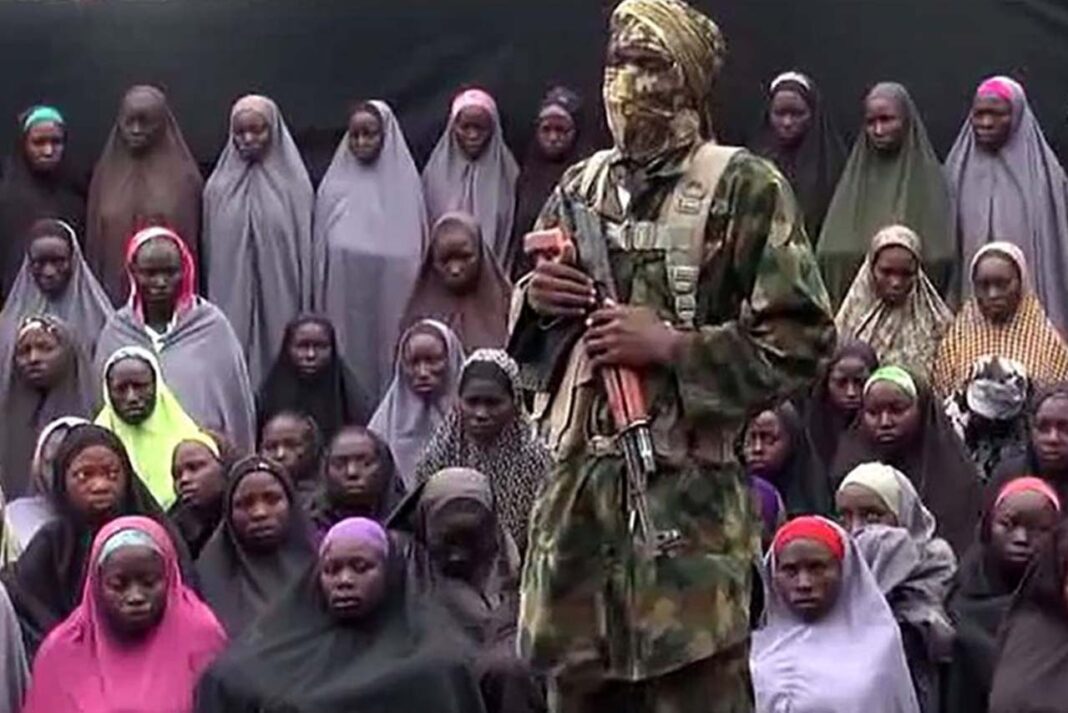We watched in horror the story of the 276 schoolgirls kidnapped in Chibok by the Boko Haram terrorist organization in 2014. As an anti-Western education terrorist group, Boko Haram has primarily targeted schools that provide Western-style education, carrying out abductions and actions by seizing students from these schools. The majority of those kidnapped and held—often for being seen as less suspicious—have been women and girls.
Boko Haram not only sees women as victims, but also utilizes them as tools of war, dragging them into another endless conflict.
Terrorism
Terrorism is defined as the systematic, premeditated use of violence aimed at creating fear within society by targeting civilians, for the purpose of achieving a political goal (Çardak et al., 2025:134). Methods of violence used by terrorist organizations include armed actions, planting mines/explosives, assassinations, activities conducted to obtain weapons and financial resources, kidnapping, and indiscriminate armed actions in public places (Price, 1977; Özdemir, Bural, 2021:14).
Today, the African continent is marked by the active presence of various terrorist organizations due to social, political, and economic adversities. These circumstances give rise to regional terrorist groups and create an environment in which global terrorist organizations can grow in Africa. Within this context, Boko Haram is especially prominent in Nigeria (Çardak et al., 2025:134).
Boko Haram Terrorist Organization
Boko Haram was founded in 2002 in Maiduguri, the capital of Borno State, by Islamist cleric Mohammed Yusuf (Ezeani et al., 2021; Çardak et al., 2025:138). The term Boko Haram is derived from the Hausa word “boko,” meaning “Western education,” and the Arabic word “haram,” meaning “sin” or “forbidden.” Thus, “Boko Haram” translates from Hausa as “Western education is forbidden” (Okemi, 2013:2).
Boko Haram not only rejects Western education, but also opposes Westernization, Western culture, secularism, and democracy (Sıradağ, 2015: 9-11). In this context, members of the group turned away from modern state and private institutions associated with Western culture, believing that their structures prevent Muslims from correctly performing their daily prayers (Duodu, 2009; Çardak et al., 2025:139). The organization aimed to establish a fully Islamic state by implementing Sharia courts and rejected Westernization by opposing man-made laws (Çardak et al., 2025:138).
Boko Haram and Women
Unlike other terrorist organizations, Boko Haram involves women in terrorist activities. Within the group, women are given not only simple roles but also actively participate in illegal and violent acts such as suicide bombings, armed attacks, and weapons smuggling. Although the use of women in terrorist acts is not new, the main reasons women are involved in the organization include that they are viewed as less suspicious than men, are subjected to less thorough searches, and can hide weapons and bombs under their clothing (Pricopi, 2016:42).
Boko Haram’s use of women and girls in their operations first began in April 2014 with the abduction of 276 schoolgirls from a school in Nigeria (Pricopi, 2016:43). Subsequently, 91 women and children were kidnapped in Borno State (Associated Press, 2014), and another 185 women and children were taken from the village of Gumsuri (Aminu, 2014). During Boko Haram’s 2014 kidnapping operations, the use of women as suicide bombers increased, with women carrying out 80% of the 34 suicide attacks that year. The organization also targeted villages, towns, camps, marketplaces, and mosques (Özdemir, Bural, 2021:15-16). During this time, in order to avoid drawing the attention of security forces, the group used women as suicide bombers (Bello, 2021:91).
On February 19, 2018, 110 female students were kidnapped from a girls’ technical school (United States Department of State Publication, 2019:37). Thus, Boko Haram, in line with its ideology, has attacked state schools providing Western education and abducted students (Özdemir, Bural, 2021:17).
Boko Haram keeps the girls it abducts for use in exchanges for its members, as sexual slaves, by forcing them to marry group members, and by coercing them to convert their religion. Some of the abducted girls are forced to become members of the group, made pregnant to raise new recruits, or used as suicide bombers. These are among the tactics used by the organization (Özdemir, Bural, 2021:20).
Social Media and Boko Haram on a Global Scale
The “Bring Back Our Girls” campaign, launched to recover the girls kidnapped by Boko Haram in Chibok, gained international momentum after receiving support from Michelle Obama (Özdemir, Bural, 2021). The campaign, which achieved global reach, paved the way for a ceasefire between Boko Haram and the government, although it could not be implemented in practice (Oyewole, 2016).
Following renewed negotiations in 2016, 21 girls were released; in 2021, another 82 girls were returned to the government through a deal (Busari, 2021).
Conclusion
The sexual violence perpetrated by terrorist organizations against women is not only a war crime but is also used as a systematic strategy to divide and subdue society. Boko Haram’s use of women—through abductions, sexual violence, forced marriages, militancy, and suicide bombing—is the organization’s most distinctive characteristic. International campaigns calling for the release of the abducted women have largely been unsuccessful, and the women who have returned to their communities have faced social stigma and psychological abuse. This double victimization experienced by the released women reveals that escaping from Boko Haram does not mark an end, but rather the beginning of a second struggle.
Resources
-
Aminu, A. (2014, 16 Nisan). As many as 200 girls abducted by Boko Haram, Nigerian officials say. CNN (Accessed: 22.09.2025)
-
Associated Press. (2014, 24 Haziran). Witnesses, s. Extremists abduct 91 more people in Nigeria in deadly weekend attacks on villages. Fox News (Accessed: 22.09.2025)
-
Bello, M. M. (2021). The Terror Campaign of Boko Haram: Its Transformation and Challenges to Nigeria’s Security. Golden Ratio of Social Science and Education, 1(2), 85-94.
-
Busari, S. (2021, 29 Ocak). Several remaining missing Chibok schoolgirls escape from Boko Haram. CNN (Accessed: 22.09.2025)
-
Çardak, B., Koncagül, P. B., & Öcal Arslan, Ş. (2025). “Afrika’da Terörizmin İki Yüzü: Boko Haram ve El Şebab’ın Bibliyometrik Bir Analizi”, Uluslararası İlişkiler ve Politika Dergisi, 5(2), 133-158. DOI: 10.62334/ulipod.1660431
-
Okemi, M. E. (2013). “Boko Haram: A Religious Sect or Terrorist Organization”, Global Journal of Politics and Law Research, 1(1), 1-9.
-
Oyewole, S. (2015). Boko Haram: Insurgency and the War against Terrorism in the Lake Chad Region. Strategic Analysis, 39(4), 428-432. doi:10.1080/09700161.2015.1047227
-
Özdemir, Ö. & Bural, E. B. (2021). Bir Terör Eylemi Yöntemi Olarak Adam Kaçırma: Boko Haram ve Chibok Kızları Örneği. AHBV Akdeniz Havzası ve Afrika Medeniyetleri Dergisi, 3(2), 9-24.
-
Pricopi, M. (2016). Tactics used by the terrorist organisation Boko Haram. Scientific Bulletin, 21(1), 40-45. doi: 10.1515/bsaft-2016-0035.
-
Sıradağ, A. (2015). Sahra Altı Afrika’sında terörist grupların yükselişi Boko Haram ve Eş-Şebab. SETAV PDF (Accessed: 21.09.2025)
-
U.S. Department of State Bureau of Counterterrorism. (2020). Country Reports on Terrorism 2019. State.gov (Accessed: 21.09.2025)


